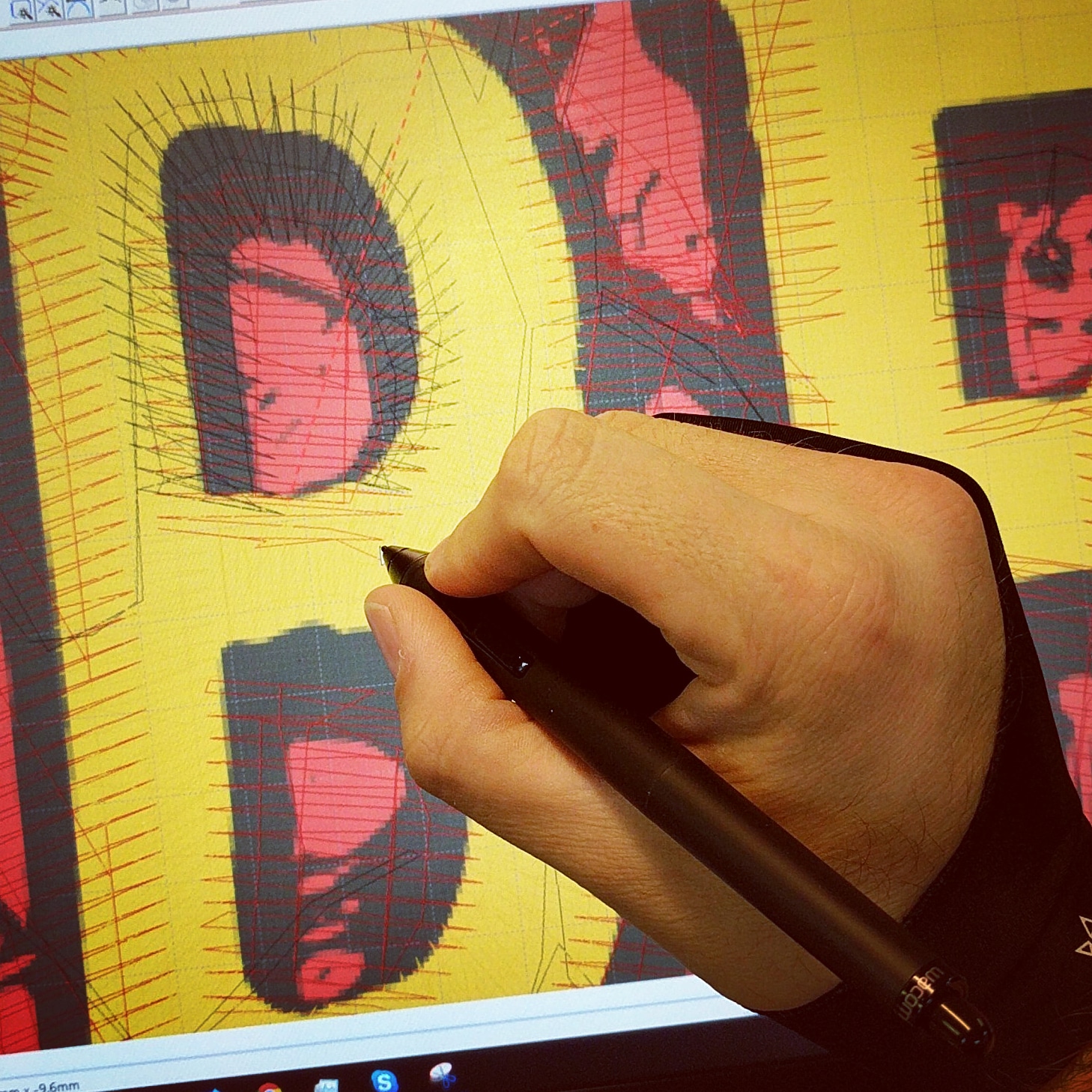Custom Digitizing for Embroidery: Tailored to Your Needs
Custom Digitizing for Embroidery: Tailored to Your Needs
Blog Article
Explore Different Sorts Of Embroidery Digitizing Strategies
Embroidery digitizing has advanced substantially over the years, using a myriad of techniques to bring layouts to life in the electronic realm. The world expands to much more sophisticated techniques like photorealistic embroidery digitizing and the remarkable world of 3D needlework digitizing.
Traditional Hand Embroidery Digitizing
Traditional hand embroidery digitizing involves the procedure of transforming intricate hand-stitched styles right into digital layouts for machine needlework. This method calls for proficient craftsmens to diligently analyze the handmade layout and after that make use of specialized software to recreate it in a digital style. Each stitch, color, and detail needs to be very carefully converted to ensure that the essence of the initial hand needlework is preserved in the digital version.
Among the crucial obstacles of typical hand embroidery digitizing is capturing the ins and outs and nuances of the handmade layout. Digitizing for Embroidery. Artisans have to possess a deep understanding of different needlework strategies, such as satin stitch, chain stitch, and French knots, to accurately duplicate these strategies in the digital realm. Furthermore, they require to have an eager eye for information to make certain that the electronic design preserves the very same level of creativity and workmanship as the original hand-stitched item
Punching Technique
To perfectly transition from conventional hand needlework digitizing to the punching technique, craftsmens must currently concentrate on transforming the elaborate electronic layouts right into instructions that embroidery makers can analyze. The punching technique entails using specialized software program to develop digital files that consist of commands for the needlework equipment to comply with. This procedure needs a deep understanding of not simply the design itself yet also the abilities and limitations of the needlework machine.

Auto-Digitizing Software Application Programs
Embroidery digitizing has actually been revolutionized by the development of auto-digitizing software programs, supplying craftsmens with advanced devices to convert digital layouts into embroidery maker instructions efficiently. Auto-digitizing software application next page make use of formulas to analyze digital pictures or vector documents and generate embroidery styles instantly. These programs permit quick and exact conversion of detailed styles into stitch patterns, conserving time and initiative for embroiderers.
Among the vital benefits of auto-digitizing software is its easy to use user interface, making it accessible to both novices and seasoned digitizers. These programs frequently include functions such as stitch modifying tools, thread shade matching, and the capacity to preview the final embroidered layout. In addition, auto-digitizing software program can handle complex styles with numerous shades and elaborate details, producing premium embroidery data appropriate for different Continue clothing and textile jobs.
While auto-digitizing software application supplies convenience and efficiency, it is crucial for users to understand the limitations of automated digitizing. Fine-tuning and manual modifications may still be needed to attain the preferred needlework quality, particularly when taking care of complex or one-of-a-kind layouts. By leveraging the capacities of auto-digitizing software application alongside manual digitizing techniques, artisans can improve their needlework digitizing procedure and develop magnificent stitched items.
Photorealistic Needlework Digitizing
Making use of innovative digital imaging techniques, achieving photorealistic lead to embroidery digitizing has actually come to be a look at here desired ability amongst contemporary craftsmens. This strategy involves transforming high-resolution pictures into complex stitch patterns that closely imitate the original design, leading to embroidery pieces that show lifelike information and depth.
To accomplish photorealistic embroidery digitizing, craftsmens have to have an eager eye for detail and a complete understanding of how different stitch kinds and thickness can influence the final outcome. By meticulously mapping out each color and shade in the picture, embroiderers can produce an electronic file that overviews the embroidery maker to replicate the subtleties of the initial picture accurately.
Photorealistic needlework digitizing is especially preferred in developing custom styles for apparel, home decor, and art items where catching the significance of a picture or art work is essential. This method permits artisans to change memories, landscapes, portraits, and complex art work right into spectacular embroidered masterpieces that showcase a blend of standard craftsmanship and innovative technology.
3D Needlework Digitizing
With the development of digital imaging strategies in attaining photorealistic cause embroidery digitizing, the exploration of 'D Embroidery Digitizing' supplies a new measurement to the details of layout duplication. 'D Needlework Digitizing' refers to the three-dimensional digitizing technique that adds depth and texture to needlework layouts, creating a much more reasonable and aesthetically appealing end product. This technique makes use of software program that simulates the impact of light and darkness on the needlework style, enhancing its general visual influence.
Among the essential benefits of 'D Needlework Digitizing' is its capacity to make layouts look more natural and dynamic. By adding deepness to the needlework style, the end product shows up more sensible and captivating (Digitizing for Embroidery). Additionally, this method enables even more innovative freedom in design implementation, allowing embroiderers to explore different textures and effects that were previously testing to accomplish
Final Thought

Report this page